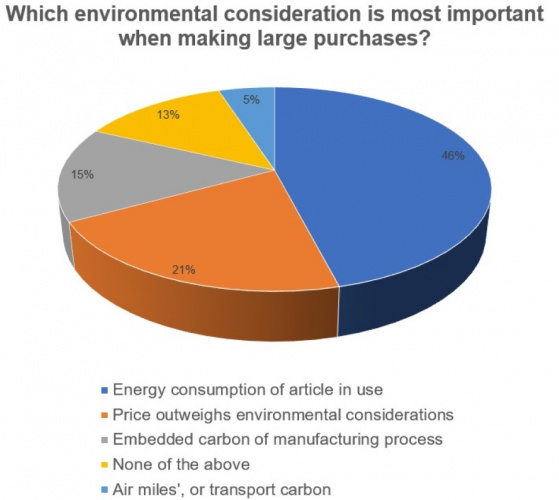Last week’s poll: environmental purchase considerations
With eco-labelling becoming more prevalent we decided to ask if Engineer readers apply environmental criteria when buying big ticket items like cars or white goods.


Energy consumption of the purchased item in use was the most important factor for 46 per cent of respondents, followed by just over a fifth (21 per cent) who believe the cost of the item outweighs any environmental considerations.
A total of 15 per cent of respondents looked to the embodied carbon emitted during the production of an item, followed by five per cent who consider the emissions generated when transporting consumer goods.
The remaining 13 per cent opted for ‘none of the above’, including John Hartley who would’ve liked to have seen a ‘cradle to grave’ option.
“Remember the shock when the Jeep Wrangler was named greenest car a few years ago?’ John said. “Its fuel consumption was high, but it was a simple design to manufacture & recycle, so over its life, it was greener than an electric or hybrid car.”
Ekij suggested that ‘cost’ is misleading. “I try and look at total running cost which is a combination of purchase cost and day-to-day running cost,” said Ekij. “Alas I would struggle to believe the carbon or energy used in manufacture as these are too easy to lie about.”
Register now to continue reading
Thanks for visiting The Engineer. You’ve now reached your monthly limit of news stories. Register for free to unlock unlimited access to all of our news coverage, as well as premium content including opinion, in-depth features and special reports.
Benefits of registering
-
In-depth insights and coverage of key emerging trends
-
Unrestricted access to special reports throughout the year
-
Daily technology news delivered straight to your inbox









Water Sector Talent Exodus Could Cripple The Sector
Maybe if things are essential for the running of a country and we want to pay a fair price we should be running these utilities on a not for profit...